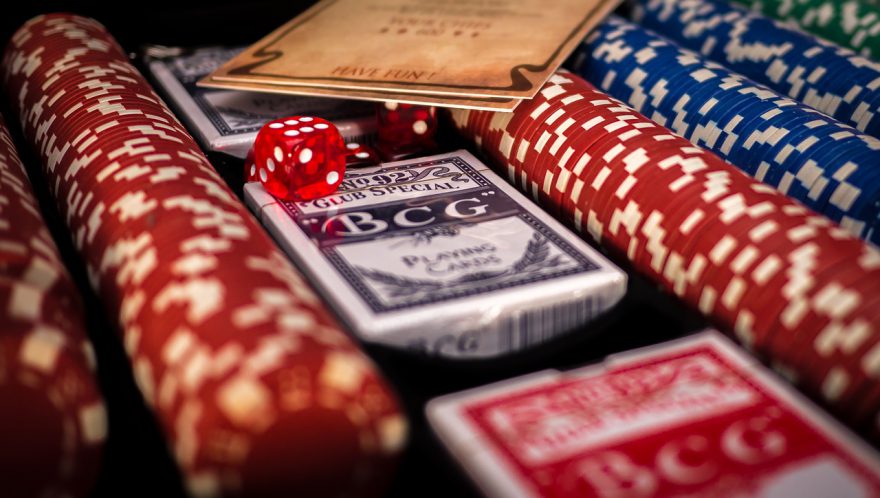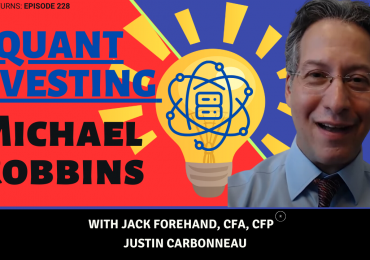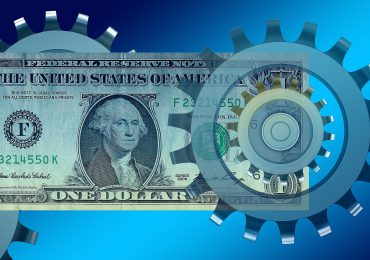By John P. Reese
The mathematician Ed Thorp figured out how to beat Las Vegas casinos at blackjack and baccarat and they didn’t like it. But the MIT and University of California Irvine professor didn’t get discouraged. He applied those same mathematical principles to the markets, and also won.
Mr. Thorp knows that good ideas have limited runs. As more investors pile into a winning trade, the returns start to diminish and the idea can no longer outperform the market.
During a recent Bloomberg interview with Barry Ritholtz, Mr. Thorp discusses this phenomenon in the context of Berkshire Hathaway, whose Warren Buffett he first met in the 1960s as he was developing a trading strategy for warrants that caught Mr. Buffett’s attention.
In the corporate world, companies reach the limits of their ability to generate new sales on their own so they merge with competitors to cut costs and reignite growth. It works for a while, and then they reach the same sales-growth limit, only next time the merger target has to be even bigger to make a difference. As a company gets bigger and bigger, generating consistently higher returns becomes more difficult.
Mr. Thorp is a statistical arbitrageur, exploiting differences in the prices of securities that should move together. He discovered that he could bet on the price of the shares to drop by buying warrants and selling the shares short as a hedge. He discovered a strategy that generated returns.
Some hedge funds use a strategy called merger arbitrage, which involves buying and selling the stocks of two merging companies, basically a bet on the risk of the deal not closing. The stock of the target company should be lower than the price of the combined company. A successful arbitrager will be able to exploit the difference until they converge and the arbitrage is over.
Berkshire Hathaway made billions for Mr. Buffett. Mr. Thorp told Mr. Ritholz he missed out on the early years but did get in in 1982. A $1,000 (U.S.) investment then would be worth about $250,000 now, about a 17-per-cent annualized return.
But Mr. Thorp recognizes that his friend isn’t going to be able to beat the markets all the time. Every edge has a limit, and as something gets bigger and bigger, performance struggles. Even Berkshire has experienced this phenomenon, though holding shares in it still have advantages, he says. Still, investors who don’t have a definable edge would be better to stick to the index itself instead of trying to beat the market at its own game.
The New York Times had statistician Salil Mehta crunch the numbers recently and he found that Mr. Buffett’s first quarter-century at Berkshire saw a 30-per-cent return using market value compared to 10 per cent for the S&P 500. For the second quarter-century, Berkshire returned 14 per cent versus 10 per cent for the index. For six years after that, Berkshire returned 15 per cent while the S&P returned 17 per cent.
Of course, another truth is that one person isn’t going to beat the market all the time. As Mr. Buffett would say, taking a long-term view and sticking with your strategy through ups and downs will ultimately make money.
When it comes to stock picking, finding an edge in today’s market can be difficult, although it’s not impossible. One way investors can tip the odds in their favor, however, is by emulating the stock-picking methods of other great investors, including Buffett, in a systematic and ultra-disciplined way. I have studied the strategies of Buffett and other investing greats and captured their methods in a series of stock selection models. Strategies, such as the Buffett model (which I based on the book Buffettology), often time bring us into beaten down areas of the market where there is a battle between the value of the business and what the market collectively thinks the value is. Using these models as starting points for investment idea generation can be useful and below are a few names that currently rank highly based on the Buffett-inspired model. For more details on the stocks, you can use Validea’s Guru Analysis tool or see the entire article in The Globe and Mail:
- Ross Stores Inc. – This discount fashion retailer is favored for predictability of earnings, management’s use of capital, and an average expected rate of return of 21 per cent.
- Credit Acceptance Corp. –This auto finance company also passes all eight screening criteria, with a 17 per cent expected rate of return.
- Monster Beverage Corp. –This soft-drink and energy-drink maker pass most Buffett criteria as evidenced by a 17-per-cent return on equity and long-term earnings-per-share growth of 19 per cent.
John Reese is founder and CEO of Validea.com and Validea Capital Management, LLC. Validea is a quantitative investment research firm and Validea Capital, a separate company from Validea.com, which maintains this blog, is a asset management firm offering private account management, ETFs and a robo advisor, Validea Legends and Validea Legends Income. John is a graduate of MIT and Harvard Business school, holder of two US patents and author of the book, “The Guru Investor: How to Beat the Market Using History’s Best Investment Strategies”.







